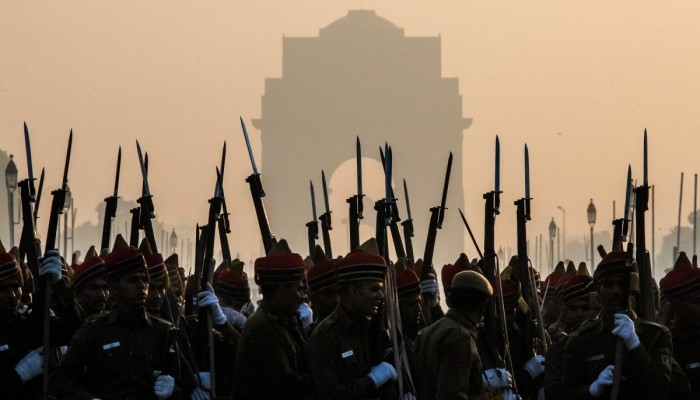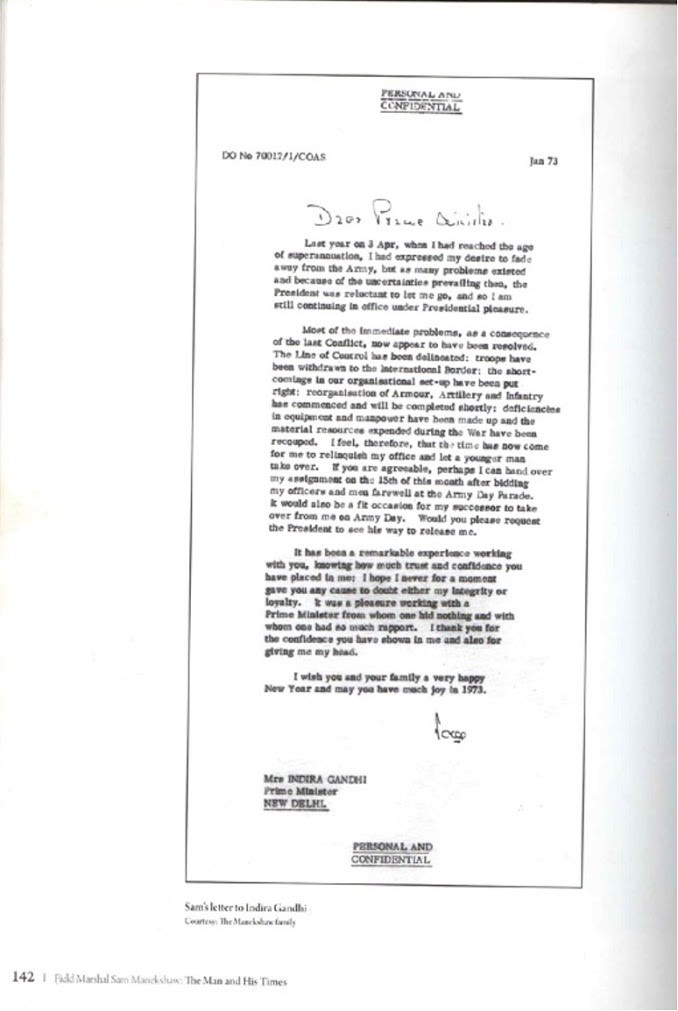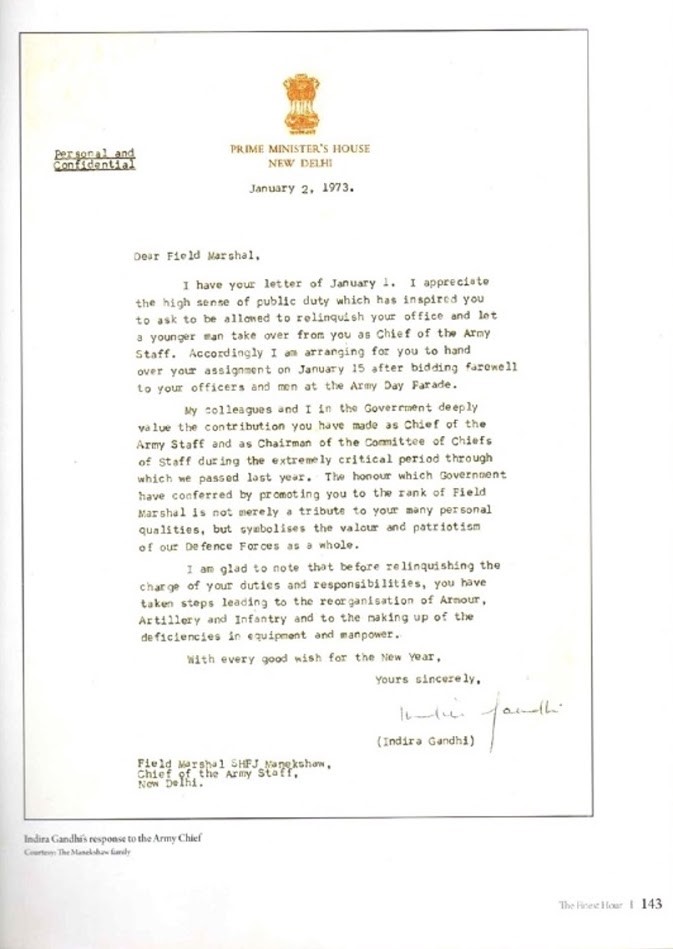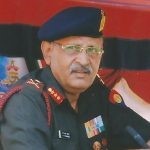Reorienting Indian Army for Theatrisation
- In Military & Strategic Affairs
- 11:50 AM, Jul 13, 2021
- LT GEN P R SHANKAR (Retd)
Multi Domain Operations (MDO) are changing battle spaces and the way wars are fought. The shift towards non-contact warfare is a palpable trend. In this milieu, India’s theatrisation drive has hit a speed bump with the ‘Supporting Arm’ issue.
As warfare is changing, the traditional roles of Armed Forces, their constituent Arms and Services are also changing in the multi domain scenario. Understanding these changed roles and their integration in the larger scheme of things is important for successful theatrisation. For example, cyber warfare is gaining new ground daily. Cyber space is keenly contested.
In this domain, it is mainly the Cyber Warriors/ Corps of Signals which will be executing cyber-attacks or defence. They will have a huge role to play in any equivalent of the Chinese ‘three warfare strategy’ (if things evolve logically). This war will occur more often than the traditional violent form of warfare. Will they be a ‘Support’ system?
In the Himalayan terrain, ensuring mobility, survivability and energy availability to own forces and denying it to the enemy is a 24x7, 365 days task for Combat Engineers. They have to be supported to execute these tasks.
In this context, the traditional thought process that an ‘Arm’ gets supported or is a ‘Support Arm’ or ‘Service’ needs a fresh look. In fact, the thinking should be that every Arm and Service complement each other in any task. From an outlook based on inter-se supremacy, one needs to move into an egalitarian system since MDO is egalitarian in nature.
In fact, Galwan has given us the lead. There were personnel of Artillery, Signals and Engineers on that fateful day in Galwan next to their Infantry brethren in thrashing the Chinese. Definitely all of them were not in any ‘Support’ or ‘Supported’ role as per current segmented thinking in the Army. There were in ‘Mutual Support’ to uphold the best traditions of the Indian Army and the Nation. That is where we have to go – ‘Mutual Support’ from the ‘One and Only’ thinking.
The concept of ‘Supported Arm’ and ‘Support Arm’ was relevant when Arms and Services had cut and dried roles in battle. As time passed, roles of each Arm and Service have expanded. The traditional thinking has erected internal barriers for the Indian Army. Unless these boxes and barriers are broken and reoriented, Theatrisation and jointness with other Services is a chimera. Having given some examples, I will dwell upon the expanded roles of Artillery beyond the classification of being a ‘Support Arm’ and their relevance in Theatrisation.
Historically, the concept of Artillery being a ‘Support Arm’ is a hand me down British legacy. In the days of the yore, Artillery provided fire support to Infantry or Mechanised Forces when attacking on objectives or to bring down defensive fire on an attacking enemy. It was classified, as a Support Arm, as per its main role.
At that time, the engagement ranges were around 5-10 km in a battlefield of limited depth. Battlefield depth could only be increased by capture of an area or over running it through manoeuvre. The advent of Air Forces and Long-Range Artillery which could reach deep into enemy territory changed many equations of depth. Notwithstanding this, even then, in the Soviet scheme of things, Artillery was rarely supportive. It was predominantly destructive and offensive. China referred to long range systems as their ‘Second Artillery’.
Examine the air strikes on the terrorist camp at Balakot. Similar strikes could have been carried out by cruise missiles or long-range guided rockets in a non-contact mode. What if India had opted to do so? The escalation factor could have been better controlled with far lesser risk. The results would have been the same or even more subtle. It would have been a classic case of non-contact warfare in depth.
Additionally, in an era when physically crossing the LOC is a politically difficult proposition, it is non-contact warfare which comes to the fore. The Indian Army is seriously deliberating on non-contact warfare. It is therefore axiomatic that modern Artillery with its long range and precision capability has a huge and major role in non-contact warfare. On the other hand, Infantry and Mechanized Forces have limited roles in this evolving paradigm. Artillery in non- contact warfare is not ‘Supportive’.
As the variety, range, lethality, accuracy and also tactical and strategic mobility of Artillery is increased, its role in the battlefield has also enlarged. Artillery and IAF will have to combine to take the battle into our adversaries’ depth to deter them. Their firepower is interchangeable circumstantially. They need to be interoperable.
Additionally, Artillery will also have to continue its role of providing firepower for the close battle as it occurs. It will be the bridge of theatrisation, capability development and technology. It will also be the bridge to plug the paucity of fighter aircraft. If the role and status of Artillery is not seen in the correct perspective and developed accordingly, national security is at stake.
Let us hark back to the Kargil War era. In the initial stages of the war, there were headlong Infantry dominated attacks with almost no fire power. Such attacks failed to dislodge the Pakistanis. We suffered many unnecessary casualties. It was then that Artillery was massed. At the height of the War, there were 22 Infantry battalions in the fray. There were also 22 Artillery regiments in battle as equal partners!
The Bofors Guns and Grad BM 21 multi barrel rockets were concentrated. Heavy fire power was brought to bear on the Pakistani defences on Tololing, Tiger Hill and other objectives. As per the then DG Artillery who was fully in the know of things, ‘Concentrating 22 Regts for just a Division plus operation meant creating voids in other sectors/theatres.
We had to plan to side step and regain balance in case they flared up’. The enemy was hammered to ‘Destruction’. Much has been written about the role of Artillery in the operation.
However, India Today’s description of the role of Artillery in ‘Op Vijay’, sixteen years later, is an apt fit - “The Kargil conflict once again established beyond doubt that artillery firepower plays a major part in achieving victory on the modern battlefield. Accurate artillery fire reduces the enemy's defences to rubble. Sustained artillery fire gradually wears the enemy's resistance and ultimately breaks their will to fight. By systematically degrading the enemy's fighting potential before a physical assault is launched, the artillery helped to reduce the casualties suffered by assaulting infantrymen. Throughout the offensive phase of Kargil conflict, artillery was called upon to respond to emerging situations and it did so with alacrity and telling lethality. The infantry battalions involved in the fighting were the first to acknowledge the immense debt of gratitude that they owe to their artillery comrades”[1].
Terms like ‘Massed Fire’ ‘First Salvo Effectiveness’, ‘Simultaneity’, ‘Non-Linearity’, ‘Shoot and Scoot’, ‘Burst Fire Capability’ and ‘Destruction’ came into the military lexicon. Thereafter, Gunners thought and lived for ‘Destruction’. Shedding 105 mm guns and moving to 155mm guns as the standard calibre and other more destructive weaponry was premised on the desired transition from ‘Neutralization to Destruction’. It was not ‘Supportive’ in nature but deliberately offensive to enable victory. This is not to decry our indomitable Infantry. It is to set right future perceptions of combat power in a multi domain scenario.
In the Himalayan terrain, the main combat arms are Infantry and Artillery, with a terrain specific / localised role for Mechanised Forces. Against Pakistan, Artillery will be an overwhelming and punishing force. Against China it will be a stopping force. Also, the main source of firepower in mountains is Artillery since Air Force might not be as effective due to vagaries of weather and terrain conditions.
The Artillery Division is to the mountains what the Armoured Division is to the plains. It enables and promotes manoeuvre by punching a hole in areas where movement is restricted through a combination of destruction and interdiction. The tempo of any manoeuvre will be dictated by the ferocity of firepower. Overall, the evolving role of conventional Artillery is strategic in nature. It is now an instrument of ‘conventional deterrence’. These issues are being lost sight of when Artillery is treated merely as a ‘Support Arm’. Such depreciating terminology leads to restrictive thinking and development of combat potential.
In another context, Eastern Ladakh might not have happened if we had the conventional capability to strike at the Chinese depth to deter them from closing in. This could have been feasible only through a combination of Artillery and IAF. I have always felt that Theatrisation has to enable two things. It has to enhance our current capacities into better combat potential to achieve more together. Additionally, it must enable growth of our forces to suitably project power in sync with a rising India. We have to think into new horizons as we theatrise.
Artillery has given birth to the strategic forces of India. The development of Prithvi and Agni class of missiles was under Artillery responsibility ever since 1988. The first few launches of Agni and Prithvi systems are still fresh in my mind being the first Army officer to be part of the development team. As late as the Kargil War, Prithvi missile units were a part of Artillery and deployed centrally by Army HQs. These were later transferred to Strategic Forces when these organizations came up. However, even now, it is Artillery officers who command these units and formations. The bulk of the Strategic Force units are manned by Artillery personnel.
Intrinsically, the role of Artillery is also ‘Strategic’ in nature. Here I wish to highlight an anomaly. Strategic formations are commanded by officers of the General Cadre and as also from Artillery. However, the status, growth and career prospects of the General Cadre Officer follow a steeper trajectory compared to an Artillery officer after commanding similar missile formations. This Brahminical pecking order fundamentally emanates from the classification of Artillery as a ‘Support Arm’.
The Indian Army has been deployed in CI operations for long. As per popular perception it is the Infantry which carries out all CI operations. Quite true. They have done it excellently. Equally, what has gone unnoticed is that next to the Infantry, it has been the Artillery which has been most employed in CI roles. Artillery units and formations have been deployed in the CI grids in purely Infantry roles with their own AORs. Artillery personnel have suffered casualties as well as won honours and awards when Gunner units were deployed in CI ops.
Units have earned citation at theatre and army levels for their outstanding performance on the CI grid. It is more than some ‘Combat Arms’ have achieved. Artillery has been a multirole arm of great versatility. I can vouch for it because I am a product of that multirole paradigm. Even now, many Artillery units are deployed on the LOC in an Infantry role to plug gaps. Artillery can do its task and that of Infantry also. It has always executed its primary roles as well as secondary roles beyond expectations. However, it is a Supporting Arm. How logical is that?
I was once present in a discussion where an Army Commander holding forth on operational issues. He pointed out that we would be able to handle the PLA under conventional conditions. However, if the PLA missile arsenal was brought into play, the game would be in uncharted territory. His apprehensions were evident.
Similarly, it was well understood that the GRAD BM 21 was unsuitable for mountains. They were still used in Kargil. They made a difference. The psychological impact of rockets firing, particularly, if one is at the target end can be pretty frightening. The Army commander was not alluding to the PLA Artillery in a ‘Supportive’ role. His apprehensions were of the ‘Psychological’ breakdown which we would suffer after a missile attack. This is a frightening dimension of war which is way beyond ‘Support’. It has national and international implications. The sauce for the goose is also the sauce for the gander.
I stumbled upon a correspondence between our COAS (Fd Marshal SHFJ Manekshaw) and the PM (Indira Gandhi) in 1973. (see above)[2] in a biographical publication. The reference and discussion between the two on the status of Armour, Artillery and Infantry is illuminative due to its egalitarian outlook.
Our military tradition has always been levelheaded. The rise of a supremist attitude in some sections of the Indian Armed Forces is a neo modern fissiparous phenomenon. It is this supremist thinking which is now in danger of being extended to other Services. It will inhibit Theatrisation.
Theatrisation can take place only if the fundamentals are right. As a system we have been out of balance. Unless we accept that and the fundamentals are corrected, India will not succeed. In these days of Multi Domain Operations every Service and Arm has a role to play in the flattened battlefield. I have dwelt on the expanded role of Artillery.
Equally other Arms and Services will have their expanded or curtailed roles which have to be identified. Capabilities must be developed at national level accordingly. The Indian Army needs reorientation into being egalitarian as much as Multi Domain Operations are.
Theatrisation, without this correction will be suboptimal and will lead to national under capacitation. It is time the office bearers of India’s higher defence organization smell the coffee.
- Ashraf Wani, ‘Bofors Power Proved in Kargil War’, India Today, 25 July 2016. https://www.indiatoday.in/india/story/kargil-winning-the-battle-with-bofors-331307-2016-07-25. Accessed on 30 June 2021.
- Brig Behram Panthaki (retd) and Zenobia Panthaki, Field Marshal Sam Mankeshaw, The Man And His Times Niyogi Books, 2014, Pages 142 and 143.
Image Source: The Print









Comments